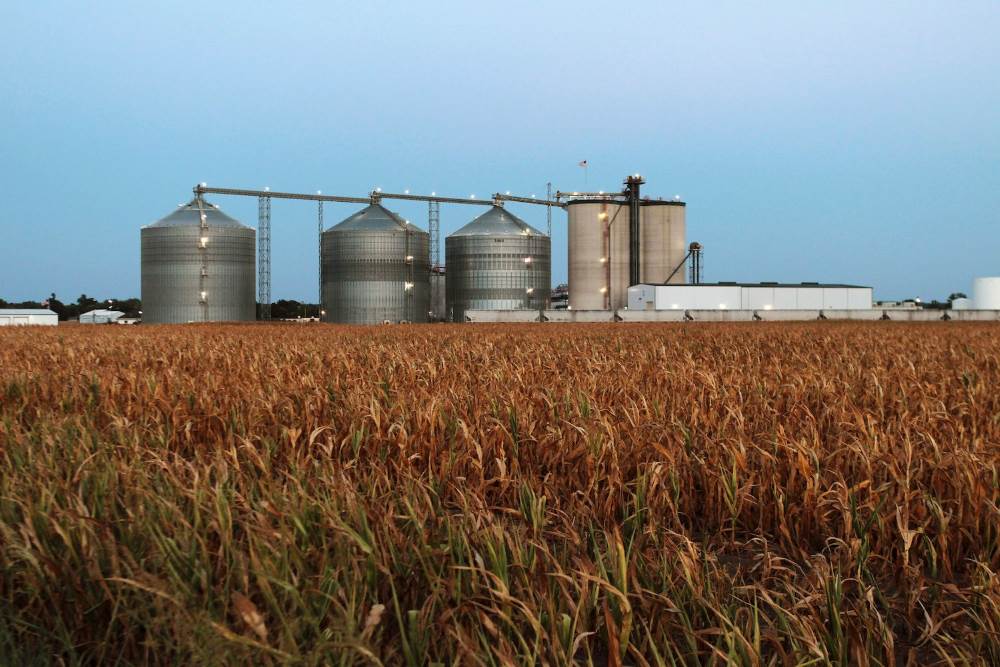What is Ethanol Fuel, Uses, Types & How it is Made?

Ethanol fuel, derived from crops such as corn or sugarcane, makes a valid substitute for traditional fossil fuels. The obvious reasons for its popularity are the reduced level of emission and reduced dependence on oil. This blog covers different ethanol blends, production methods, and vast application areas in the modern energy world.
However, ethanol has always been criticised, mostly by those involved in the oil business, and rumours or even flat-out lies about this kind of fuel have been reported for an extended period. Keep reading to learn more about this fuel.

Table of Contents

What is Ethanol Fuel?
Ethanol or Ethyl Alcohol is an alcohol with multiple uses. It is a colourless liquid with a characteristic odour and taste. Its chemical formula is C2H5OH, comprised of carbon, hydrogen, and oxygen atoms.
Ethanol in anhydrous condition is relatively safe, and if by any chance it spills, the compounds break down into non-toxic products. For fuel ethanol, however, it contains denaturants that make it unfit for consumption.
Ethanol can be derived from various sources, mostly renewable, such as corn, sugarcane, barley, and wheat. It can also be obtained from cellulosic materials like agricultural waste and wood.
What is E20 Fuel?
E20 is a blend of 20% ethanol and 80% petroleum. It helps decrease dependency on fossil fuels, decrease greenhouse emissions, and increase the use of renewable energy sources.
Some of the benefits related to E20 fuel are that it provides a higher compression ratio and better combustion because of its higher oxygen content than that of petrol. Ethanol produces fewer harmful emissions than traditional gasoline and can be made from renewable resources.
What is E10 Fuel?
E10 fuel blends 10% ethanol with 90% petrol and provides huge service due to its negligible impact on most petroleum-based engines. It improves the octane rating, which directly reduces harmful emissions and emits cleaner combustion.
E10 allows for energy independence since it is derived from renewable sources and is particularly critical in reducing carbon footprints for any transportation sector across the world.
How is Ethanol Fuel Produced?
Ethanol is derived from crops that contain high amounts of sugar or starch, such as corn, sugarcane, barley, wheat, and sorghum. Sugar or starch is harvested and processed for these crops.
Meanwhile, it can, in turn, be produced from other cellulosic materials. Generally, the sugars or starches in these preceding crops are converted into ethanol through the fermentation of microorganisms like yeast or bacteria.
1. Fermentation Process
Once it has undergone fermentation, the alcohol will be stored within the fermentation tanks. This fermentation results in a mixture of ethanol and water with some by-products.
2. Distillation Process
The subsequent process is distillation, which separates ethanol from water and impurities. The mixture is heated so that ethanol starts evaporating (to be condensed back into liquid form). Dehydration may be used to remove the remaining water and further raise the ethanol concentration.
Uses of Ethanol Fuel
The following are the common uses of ethanol fuel:
Fuel
Ethanol is mainly used as a biofuel that can be combined with petroleum (as in E10, E15, E20 blends, etc.) or as a standalone fuel for engines that operate on ethanol. It is flammable and burns more effectively than other hydrocarbon-based fuels.
Beverage
Ethanol is the kind of alcohol present in alcoholic drinks. It is created by fermenting sugars in fruits, grains, or other plant substances.
Industrial Solvent
Ethanol is commonly used as a solvent in the manufacturing of various substances, such as pharmaceuticals, fragrances, and personal care products.
Antiseptic
Ethanol has many antiseptic properties, so it is widely used as a disinfectant for household and medical purposes.
Vehicles running on Ethanol Fuel in India - Car & Bike
In India, the government is encouraging the use of ethanol blends to curb its dependence on fossil fuel supply and as an impetus on renewable energy sources. Ethanol fuel blends are introduced in cars and motorcycles, and the levels of upgrades in these vehicles differ.
Cars
Ethanol Blends: Ethanol fuel can be blended with petrol to create fuels such as E10, containing 10% ethanol and 90% petrol, and E85, with up to 85% ethanol and the rest being petrol. These blends are compatible with most modern cars without meaningful modifications.
Flex-Fuel Vehicles: Most automotive manufacturers produce vehicles capable of running on various mixtures of ethanol and petrol. They have sensors that adjust the engine's operation according to the ethanol percentage in one's vehicle.
Availability: Ethanol-blended fuels are available at several gas stations in the country. However, higher blends like E85 are typically only available in a limited region or from certain manufacturers.
Government Initiatives: The Indian Government has been introducing policies and subsidies to encourage the use of ethanol-run vehicles in the country and promote its production and consumption.
Two-wheelers (Bikes)
Adoption: While less pervasive than in cars, motorcycles running on ethanol blends are available in India. Manufacturers have introduced models that run on ethanol blends, such as E10.
Performance: Ethanol's properties, such as a higher octane rating and cleaner combustion, can contribute to motorcycle performance. However, the specific models optimised for ethanol blends are variable.
Fuel Economy: The mileage of motorcycles running ethanol blends varies with the design of the engine and calibrations. In general, since ethanol contains less energy per unit volume than petrol, it can subtly decrease fuel economy.
Ethanol Fuel Mileage
The specific characteristics of ethanol fuel, a renewable biofuel produced from plant sources like corn, sugarcane, or wheat, would vary accordingly in terms of vehicle mileage.
Therefore, it should be in everybody's best interests to know how ethanol affects mileage both on a car and a bike to gain insight into the practicality and efficiency of this fuel.
Cars
- Energy Content: Ethanol has approximately 34% less energy per gallon compared to petrol. This directly relates to mileage due to the difference in energy density.
- Blends: Ethanol is usually blended with petrol in different ratios, normally E10 and E85. Clearly, the higher the fraction of ethanol in the blend, the more prominent the mileage effect will be.
- Cost Considerations: Although ethanol blends would return lower mileage, they are usually priced lower than pure petrol, thus making them a cost-effective option for consumers.
Bikes
Ethanol Blends: Like in cars, motorcycles run on ethanol blends, like E10, may unveil some loss in fuel efficiency compared to straight petrol. The actual reduction depends on the specific characteristics of the engine and the tune applied.
Performance: Ethanol's higher octane rating can improve motorcycle engine performance, so it might compensate for part of the mileage reductions.
Consumer Choice: In countries where mixtures with ethanol are available, motorcycle owners can choose which fuel to buy based on their priorities in the fuel economy-to-performance and environment-friendly ratio.
Environmental Impact: Ethanol fuel might possibly reduce mileage; however, it has overwhelming environmental benefits in terms of reduced greenhouse gas emissions and dependence on fossil fuels, making it quite an attractive option for environmentally friendly customers.
Advantages of E20 Fuel
Here are the common benefits of the E20 fuel:
Renewable: One of the key elements of E20 is ethanol, which is produced from renewable resources such as biomass, sugarcane, or corn. Therefore, E20 is considered a more sustainable fuel than regular petrol, diesel, or other regular fuels.
Benefits in Agricultural Sectors: Ethanol manufacturing commonly depends on various crops such as corn and sugarcane. Biofuels derived from these crops benefit farmers by providing new sources of income and ensuring the long-term financial stability of farming communities.
Lower Emission of Polluting Gases: The pollution level of ethanol is smaller than that of petrol, diesel, or other regular fuels. Lessening greenhouse gas emissions during the production and combustion of ethanol promotes the fight against climate change.
Greater Octane Rating: Ethanol usually has a higher octane rating compared to petrol, which may contribute to better efficiency, power, and burn rate in the engine. At least with engines designed for higher ethanol blends, one could expect increases in compression ratios plus thermal efficiencies.
Possible Financial Savings: The mass production of ethanol is cheaper than that of petroleum. If market conditions and regulations do come into play, E20 will help reduce consumers' expenses.
Disadvantages of E20 Fuel
The following are the major drawbacks of the E20 fuel:
Low Motor Vehicle Compatibility: Most vehicles are designed to run on E20, and their engine and fuel systems would have to be adapted or replaced due to running on that fuel.
Infrastructure Costs: Any significant use of E20 would require severe investments in new storage tanks, pumps, and pipelines to hold and transport the fuel with a higher ethanol content.
Corrosion: Ethanol can corrode fuel system components that are not designed for it, leading to maintenance problems.
Water Absorption: Since ethanol is hygroscopic, it tends to absorb the atmospheric water in fuel tanks, which makes phase separation a problem and may be additive to corrosion problems.
Environmental Impact: Most ethanol production methods involve intensive agricultural practices, which may lead to environmental problems such as soil erosion, rising pesticide applications, and deforestation.
Ethanol fuel has a future in renewable energy because of growing production efficiency and ensuring development into cellulosic materials. One should continue making these developments so that reduced carbon emission characteristics will move into increased sustainability, making the framework of transportation more environmentally friendly.
















